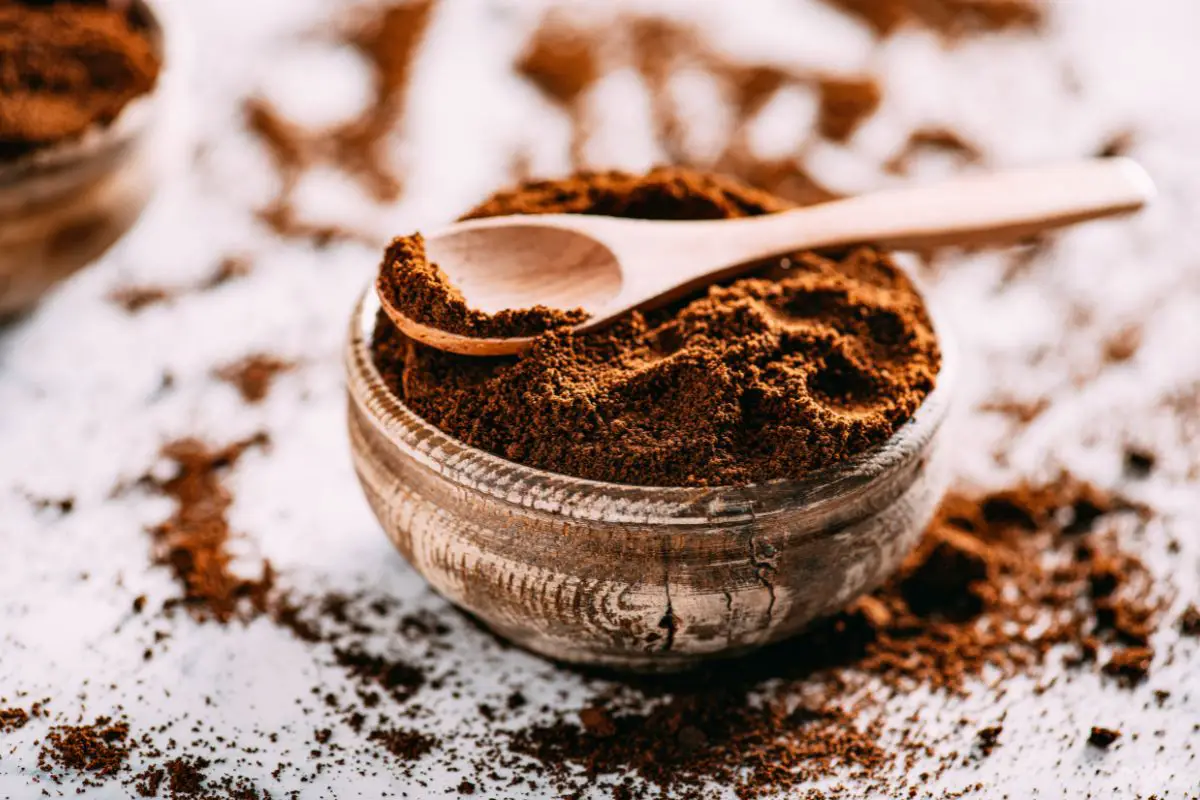Pecan, French vanilla, and hazelnut among others are some of the flavors added to coffee. These flavors do not get into coffee beans on their own. They are added using various methods. It takes a lot of experimentation and some work to flavor coffee.
The process of flavoring coffee may differ depending on whether you are making it at home or it is being made at the factory. But how exactly are flavored coffee grounds made? Do flavored coffee grounds have sugar? Let’s find out.

How Are Flavor Coffee Grounds Made?
The process of making flavored coffee beans is done carefully. Arabica beans are the best coffee beans to flavor. This is because they are less bitter and low in acidity. The beans are flavored by coating them with synthetic chemicals after roasting.
Thereafter, solvents are added. The solvents adhere the synthetic chemicals to the coffee beans, thereby giving them a glossy finish. These chemicals comprise concentrated flavoring that infiltrates the coffee beans.
The beans are tumbled gently in a mixture before being sprayed with oils. Thereafter, they are packaged quickly before the oils dry. These synthetic flavorings are a less time-consuming and cheaper option for mass production than natural flavoring. Sometimes, natural oils are used to flavor coffee instead of synthetic flavors. The natural oils are extracted from spices such as vanilla, nuts, and cocoa.
How to Make Flavored Coffee
It is possible to flavor coffee at home. Although you can use a base ingredient to flavor coffee, you can experiment with different spices until you find the one that suits you best. There are many flavors to experiment with including cardamom, hazelnut, cinnamon, cocoa, and ginger among others.
To flavor coffee beans, you will want to consider how the type of coffee bean you are working with interacts with other flavors. Take note of the existing taste notes. For instance, if you are working with a dark roast with berry and chocolate notes, you can add some cocoa flavor or bring out the fullness of these taste notes with hazelnut.
Although it is more about personal preference, some beans may not work with certain flavors. For instance, a light roast featuring natural citrus flavors will not go well with cinnamon and cardamom flavors.
Although you can infuse coffee with your preferred flavor while roasting coffee beans, it may not be the best option to try at home. This is because you are less likely to roast coffee beans yourself. The easiest way to make flavored coffee at home is to add the flavors while brewing coffee.
The process of flavoring coffee while brewing is straightforward. Simple mix your preferred spices. Then mix them with ground coffee. Next, brew coffee with spiced grounds like you normally do. The flavors in the spice will seep into your coffee during brewing. If you are adding spices from nuts such as almonds, grind the almonds together with coffee beans for optimal flavoring.
If you have some old coffee beans that have lost most of their aroma, you can add flavors to the beans to continue enjoying flavorful coffee. Also, adding flavors to coffee allows you to try new coffee flavors and expand your palate.
Do flavored coffee grounds have sugar?
Flavored coffee grounds do not have any sugar. The extracts used in flavoring coffee are purely flavors without any sugars. Flavored coffee will only contain sugar if you add milk, creamer, sugar, or syrup after brewing.
Are artificial coffee flavors bad for your health?
Many companies that make flavored coffee use chemical solvents. One of the most commonly used chemical solvents is propylene glycol. Although it is recognized as a safe additive, it may be harmful when consumed in high doses.
Is Flavored Coffee a Cover-Up for low-quality coffee beans?
It is a common practice for companies that sell poor-quality coffee beans to flavor them. When cheap and bad-quality coffee beans are sprayed with flavored chemicals, you may not notice their low quality, especially if you are an unwitting consumer.